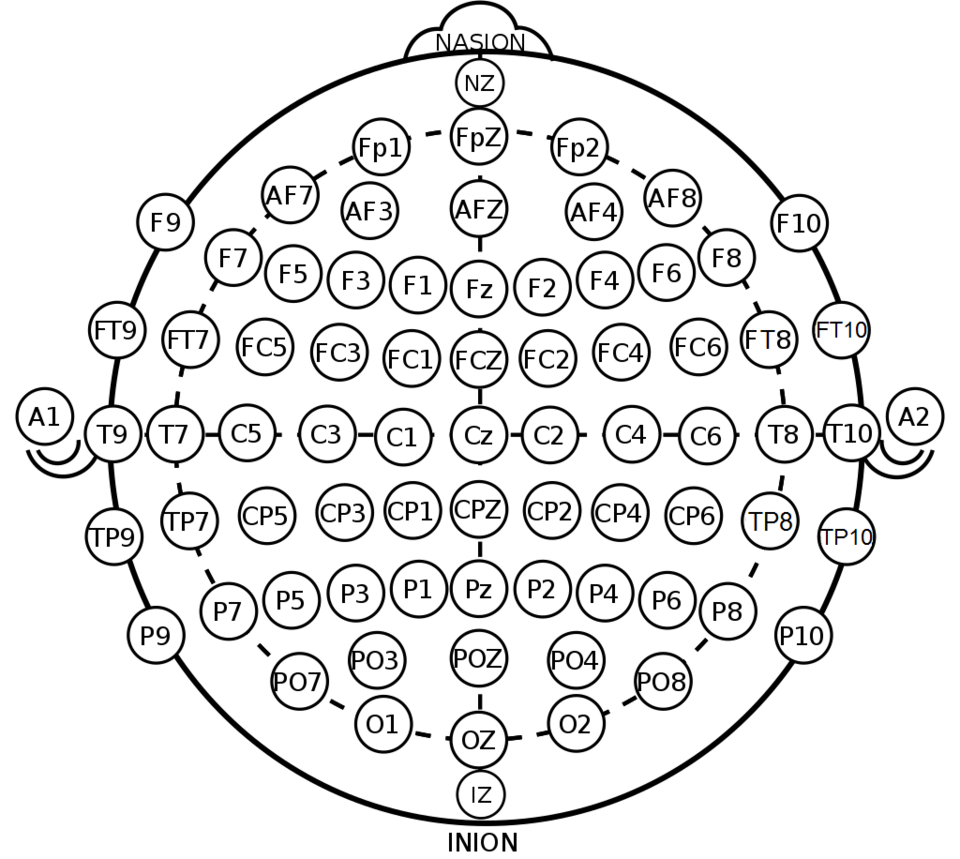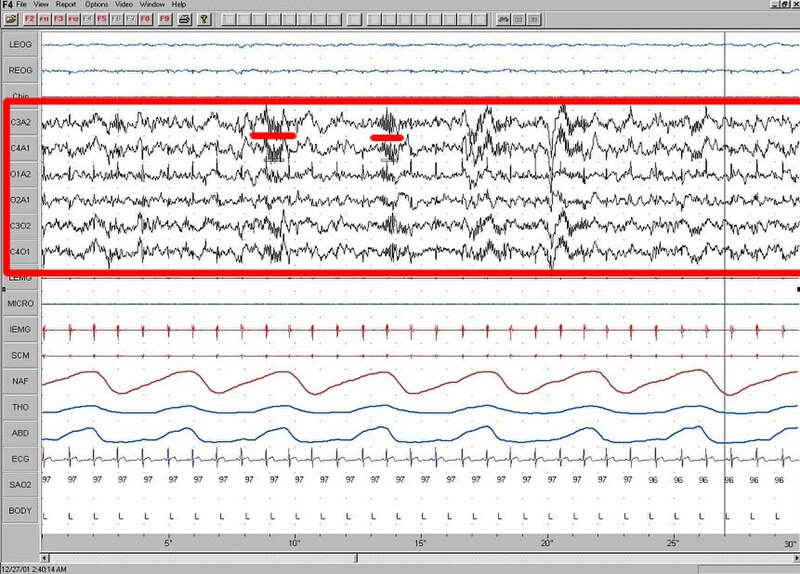IB Syllabus focus:
'- Introduction to EEG
- Applications in sleep and disorder studies
- Strengths and limitations'
Electroencephalogram (EEG) is a fundamental tool in psychological and neurological research, offering insights into brain activity and associated disorders. This technique involves recording electrical activity generated by the brain, providing real-time data crucial for understanding various brain processes.
Introduction
EEG is a non-invasive method for measuring the electrical activity of the brain. It is instrumental in studying sleep patterns and diagnosing disorders related to brain function. EEG is praised for its temporal resolution but also faces limitations, such as poor spatial resolution.
Principle of EEG
Electroencephalogram operates on the principle of detecting electrical activity in the brain. Neurons, the brain's fundamental units, communicate through electrical impulses. When a group of neurons sends impulses, EEG machines detect and record these changes in electrical activity.
Voltage Fluctuations: EEG detects fluctuations in voltage resulting from ionic current within the neurons of the brain.
Electrodes Placement: Multiple electrodes are placed on the scalp to capture the electrical activity.

The international 10–20 system shows standard scalp electrode positions (e.g., Fp1/Fp2, F3/F4, P3/P4), providing consistent coverage of cortical regions for recording brain activity. This layout underpins reliable EEG acquisition and interpretation across labs. Source.
Amplification: The electrical signals are usually feeble and are thus amplified for better observation and analysis.
Graphical Representation: The amplified signals are then represented graphically, allowing researchers to study the patterns of brain activity.
Applications in Sleep Studies
Sleep Cycle Analysis
EEG is extensively used to analyse sleep cycles. The brain exhibits different patterns of electrical activity during various stages of sleep, allowing researchers to distinguish between REM (rapid eye movement) and non-REM sleep.
REM Sleep: Characterised by similar EEG patterns to waking states, denoting high brain activity.
Non-REM Sleep: Divided into three stages, each with distinct EEG patterns indicating reduced brain activity.

EEG during NREM Stage 2 shows characteristic brief “sleep spindles” (12–15 Hz bursts) and high-amplitude K-complexes. These hallmark features enable stage scoring and illustrate how EEG patterns change systematically across sleep. (This figure highlights only Stage 2; other stages are not shown.) Source.
Sleep Disorders: EEG aids in diagnosing various sleep disorders like insomnia, narcolepsy, and sleep apnea by studying abnormalities in sleep cycles.
Sleep and Brain Function
Research using EEG has provided pivotal insights into the relation between sleep and overall brain function. By studying brain activity during sleep, scientists can explore the restorative processes occurring and understand the impact of sleep quality on cognitive functions and mental health.
Applications in Disorder Studies
Diagnosing Neurological Disorders
EEG is pivotal in diagnosing several neurological disorders, as it can detect abnormal brainwave patterns indicative of underlying conditions.
Epilepsy: EEG can identify abnormal brainwave patterns characteristic of epilepsy, helping in the diagnosis and management of the condition.
Brain Tumours: While not as precise as imaging studies, EEG can suggest the presence of brain tumours by showing altered brain activity in specific regions.
Evaluating Brain Function
EEG is also employed to evaluate brain function in conditions such as encephalopathy and brain injuries. It can monitor the brain's activity level and detect the presence of abnormalities, aiding in clinical assessment and treatment planning.
Strengths of EEG
High Temporal Resolution
One of the significant advantages of EEG is its excellent temporal resolution. EEG can detect changes in brain activity in milliseconds, allowing for the study of rapid cerebral processes.
Real-Time Monitoring: EEG provides real-time monitoring of brain activity, crucial for understanding dynamic brain processes and instantaneous responses.
Event-Related Potentials (ERPs): The high temporal resolution allows researchers to study ERPs, which are brain responses to specific sensory, cognitive, or motor events.

An example ERP waveform with labeled components (e.g., N1/N100, P2, P3/P300) plotted in microvolts over time. ERPs emerge from averaging time-locked trials, revealing rapid neural processes that underlie perception and cognition. Source.
Non-Invasive and Safe
Being a non-invasive technique, EEG does not involve inserting instruments into the body, making it a safe and comfortable method for studying brain activity, especially suitable for repeated measurements in longitudinal studies.
Limitations of EEG
Poor Spatial Resolution
A major limitation of EEG is its poor spatial resolution. EEG can struggle to accurately pinpoint the origin of electrical activity within the brain.
Source Localization: Identifying the exact source of the detected signals can be challenging due to the scattering and blurring of electrical fields by the skull and scalp.
Limitation in Studying Deep Brain Structures: EEG is most effective in studying the cortical surface of the brain and is limited in its ability to study deeper brain structures.
Sensitivity to Artifacts
EEG recordings can be affected by artifacts – unwanted noise or interference in the signal. These artifacts can arise from various sources, such as eye movements, muscle activity, or external electrical sources, potentially obscuring the true brain activity.
Data Preprocessing: Rigorous data preprocessing is essential to mitigate the impact of artifacts on EEG data, which can be time-consuming and requires expertise.
Limited Information on Neural Substrates
While EEG provides valuable information on the timing of neural activity, it offers limited insights into the underlying neural substrates and mechanisms responsible for the observed electrical activity.
Integration with Other Techniques: To gain a more comprehensive understanding of brain function, researchers often integrate EEG data with information obtained from other neuroimaging techniques like fMRI and PET scans.
In conclusion, EEG is a versatile tool in psychology, granting insights into brain activity, sleep, and various disorders. Its strengths lie in its non-invasive nature and high temporal resolution, while its limitations include poor spatial resolution and sensitivity to artifacts. Nonetheless, the detailed insights gained through EEG continue to contribute significantly to the field of psychology.
FAQ
An EEG test usually takes about one to two hours, depending on the specific requirements of the study or diagnosis. The procedure is non-invasive and generally causes no discomfort to the individual. Electrodes are placed on the scalp using a special adhesive, and individuals are often asked to relax or perform specific tasks during the test. There might be instructions to breathe deeply or look at flashing lights to provoke brain responses. The overall procedure is designed to be as comfortable as possible, ensuring the well-being of the individual while obtaining accurate and reliable data on brain activity.
No, EEG cannot detect all types of brain abnormalities or disorders. While it is excellent for identifying irregular brainwave patterns related to conditions like epilepsy and assessing overall brain function, it cannot provide detailed structural information about the brain. Thus, it may not detect conditions related to brain structure abnormalities, such as tumours or lesions. Additionally, its ability to study deep brain structures is limited. For comprehensive diagnosis and study of structural abnormalities or deeper brain areas, other imaging techniques like MRI or CT scans are typically employed in conjunction with EEG to gain a more rounded view of the brain's condition.
Indeed, EEG is widely employed in cognitive research to delve into processes like attention, memory, and decision making. The high temporal resolution of EEG allows researchers to examine the instantaneous brain responses related to various cognitive tasks, offering insights into the timing and dynamics of cognitive processing. For example, EEG can identify changes in brainwave patterns when an individual is paying attention compared to when their attention is diverted. It is also instrumental in studying memory encoding and retrieval processes, and it has been pivotal in exploring the neural underpinnings of decision-making processes, enriching our understanding of the complexities of cognitive functioning.
EEG data is graphically represented, depicting various brainwave patterns that correspond to different states of consciousness and brain activities. These waves include Alpha waves, typical for relaxed, awake states, Beta waves, associated with active, analytical thought, Theta waves, found during drowsiness or arousal, and Delta waves, prevalent in deep sleep. The interpretation of these waves enables researchers to discern the levels of brain activity and consciousness. The patterns, frequencies, and amplitudes of these waves are meticulously analysed to understand various psychological states and conditions, offering insights into neurological functions and underlying mental processes.
EEG contributes to treatment development by allowing for the continuous monitoring of brain activity in patients with neurological disorders. By analysing changes in brainwave patterns and anomalies in EEG readings, clinicians can modify treatment approaches, adjusting medication levels or exploring alternative interventions based on the brain’s responsiveness. For instance, in epilepsy management, EEG aids in identifying seizure focus and assessing the efficacy of antiepileptic drugs, facilitating personalised treatment plans. The real-time data provided by EEG is instrumental in optimising treatment strategies, thereby contributing significantly to enhancing the therapeutic outcomes and quality of life for individuals with neurological disorders.
Practice Questions
EEG has paramount importance in studying sleep cycles, allowing the differentiation between REM and non-REM sleep based on distinct brainwave patterns, providing insights into sleep quality and brain function during sleep. For example, in diagnosing insomnia, EEG reveals disruptions in normal sleep cycles, including reduced REM sleep. It is also pivotal in diagnosing narcolepsy by identifying abnormalities in REM sleep onset. These applications are crucial for comprehensive understanding and management of sleep disorders, contributing to advancements in treatment modalities and improvements in the quality of sleep hygiene and overall health.
EEG’s primary strength in psychological research is its exceptional temporal resolution, enabling the study of transient cerebral processes in real time, including the examination of ERPs, which are pivotal in understanding sensory, cognitive, and motor events. However, its spatial resolution is considerably poor, limiting the precise identification of the origin of electrical signals within the brain, posing challenges in studying deep brain structures and neural substrates. Moreover, EEG is sensitive to artifacts like eye movements and muscle activity, necessitating meticulous data preprocessing to ensure the accuracy of the recorded brain activities.

